
http://www.iaeme.com/IJM/index.asp 32 editor@iaeme.com
International Journal of Management (IJM)
Volume 8, Issue 3, May–June 2017, pp.32–41, Article ID: IJM_08_03_003
Available online at
http://www.iaeme.com/ijm/issues.asp?JType=IJM&VType=8&IType=3
Journal Impact Factor (2016): 8.1920 (Calculated by GISI) www.jifactor.com
ISSN Print: 0976-6502 and ISSN Online: 0976-6510
© IAEME Publication
A REVIEW ON EMOTIONAL INTELLIGENCE
AND INVESTMENT BEHAVIOR
Sashikala V.
Research Scholar, Avinashilingam School of Management Technology, Coimbatore
Dr.P.Chitramani
Professor and Head, Avinashilingam School of Management Technology, Coimbatore
ABSTRACT
Investors are bound to be emotional while taking investment decisions.
Conventional literature has proved that investors become more emotional while
choosing their portfolio. Investment decision making process also has evolved with the
impact of psychology wherein emotions play an important role. Emotional stability is
thus an influencing factor in investment decision making process which is identified by
Emotional Intelligence (EI). There are various EI theories serving this purpose but all
such theories are common EI theories and not specific to EI related to financial
decision making process. Assessing an investor’s behavior is a major task that should
be carried out by the financial sectors in order to help investors take better decisions.
Financial Institutions could introduce better products for investors knowing the
behavior of investors. This study focuses on identifying the constructs necessary to
identify the EI of investors through an extensive review stating the role that emotional
intelligence plays in investment behavior of the investor. A conceptual model has been
derived that states that Emotional Intelligence of an investor influences Investment
Behavior.
Key Words: Emotional Intelligence, Investment Behavior, Decision Making, Biases,
Review.
Cite this Article: Sashikala V. and Dr.P.Chitramani A Review on Emotional
Intelligence and Investment Behavior. International Journal of Management, 8 (3),
2017, pp. 32–41.
http://www.iaeme.com/IJM/issues.asp?JType=IJM&VType=8&IType=3
1. INTRODUCTION
Financial decision making follows models derived from economic theory, which postulate
that people are rational economic actors. The Tversky- Kahneman heuristics approach is
dominating, but it needs to be complemented with emotional and personality factors, since
cognitive limitations do not provide exhaustive explanations of the psychology of decision
making. It is important to identify how investors think and how investors feel. It has been

A Review on Emotional Intelligence and Investment Behavior
http://www.iaeme.com/IJM/index.asp 33 editor@iaeme.com
believed that investors usually behave rationally and hence cognitive and emotional weakness
that affects an investors behavior were ignored (Statman, 1995).
This paper is an attempt to develop a model that brings about the relationship between
Investment behavior and Emotional Intelligence (EI). There has been very few Reviews for EI
in relation to Investment behavior. Those who have found EI in relation to Investment
behavior have used a generic approach and not a specific approach. The paper is constructed
in such a way that it first part of the paper describes facts on investment behavior, emotional
intelligence and personality of investors. Following this is an extensive review stating the role
that emotional intelligence plays in investment behavior as well as its relation with
personality of the investor. A conceptual model has been derived that states that Emotional
Intelligence of an investor influences investment behavior.
2. INVESTMENT BEHAVIOR
Investment Behavior is a cross functional discipline, borrowing heavily from economics,
finance, investment, psychology, and other allied disciplines (Naela Jamal rushdi, 2015). The
behavior of investors towards investment is usually identified by the factors that determine
such investment decision. For a smart investor to capture the essence of behavioral finance,
all he/she would have to do is reflect on his/her own investment decisions. Maximising wealth
is what an investor would aim at but they are still bound by certain behavioral anomalies.
Robert J.Shiller (2000) stated that investment behavior is determined by structural factors,
cultural factors and psychological factors. Baker et. al (2002) state that by understanding the
psychological bias for investors errors and taking appropriate action of correcting them will
reduce their effects on investment outcome. Nik (2009) found that the most common behavior
that most investors do when making investment decision are (1) Investors often do not
participate in all asset and security categories, (2) Individual investors exhibit loss-averse
behavior, (3) Investors use past performance as an indicator of future performance in stock
purchase decisions, (4) Investors trade too aggressively, (5) Investors behave on status quo,
(6) Investors do not always form efficient portfolios, (7) Investors behave parallel to each
other, and (8) Investors are influenced by historical high or low trading stocks.
Individual investors are not always rational (Barber and Odean; 2011. They exhibit a lot
of behavioral biases. Investors usually tend to look at investments that would give them good
returns. The factor risk affects investor’s behavior to a greater extent. The risk taking behavior
varies from investor to investor. Likewise a model presented by Barberis, Shleifer and
Visny(1998) shows that investors do underreact to stock prices depending on the information
the investor receives which is known as Assymetric Information that helps investors take
better investment decisions (Barber and Odean, 2000; Barber et al., 2009; Gao, 2002).
Whereas (Daniel, Hishleifer and Subrahmanyan, 1998; Odean, 1999; Camere & Lovallo,
1999; Moore and Healy, 2008; Benos, 1998; Caballe and Sakovics, 2003; Gervais and Odean,
2001; Hong, Scheinkman, and Xiong, 2006; Kyle and Wang, 1997; Peng and Xiong, 2006;
Scheinkman and Xiong, 2003; and Wang, 2001; Kyle, 1985; Grossman and Stiglitz, 1980;
Diamond and Varecchia, 1981) and few others have stated that Investors tend to be
overconfident while investing.
Others state that Herding (Wermers, 1999), Mental Accounting (Thaler, 1999), Simple
Heuristics (Gigerenzer & Todd, 1999), Risk Aversion (Rabin& Thaler, 2001), Familiarity
(Massa and Simonov, 2006; Ivkovic and Weisbenner, 2005; Seasholes and Zhu, 2010;
Døskeland and Hvide, 2011) ,Status Quo Bias (Yaari, 1987), Loss Aversion (Trev &
Kahneman, 1991), Sensation Seeking (Dorn and Sengmueller,2009; Barber et al.,2009; Gao
and Lin,2011; Kumar, 2009b; Mitton and Vorkink,2007) Judgement and Uncertainty (Trev &
Kahneman, 1991) are some other determinants or biases that investors exhibit while making

Sashikala V. and Dr.P.Chitramani
http://www.iaeme.com/IJM/index.asp 34 editor@iaeme.com
investments or taking investment decisions. Finally, Finucane et.al (2000) stated that it is due
to heuristics that people tend to derive both risk and benefit evaluation from a common
source. Thus these evidences prove that investment behavior could be best determined by the
bias that is exhibited by investors.
3. EMOTIONAL INTELLIGENCE
Emotions are a result of conditioning process (Frank 1988; LeDoux 1996). Emotional
Intelligence (EI) is a psychological state that modifies individual beliefs towards a specific
action (Elster 1998). Arnold (1960) has stated that an individual’s emotional state is an
intuitive action which hurts or rewards depending on situations.
Zeidner, Roberts, & Matthews, 2009 defines Emotional intelligence as “a set of aptitudes,
competencies, and skills for managing emotion and emotive encounters”. Emotional
intelligence (Salovey & Mayer, 1989; Mayer & Salovey, 1993; Caruso et al., 2002) plays an
important role in investment decisions and is hence considered as a personal characteristic.
According to Goleman (2006), investors make better decision making strategies with high
emotional intelligence.
The relation between EI and life outcomes suggests that EI informs the understanding of
emotions, and their interventions in human behavior. As an emotion emerges, it results in
changes in physiology, behavior, cognition, and subjective experience (Izard 1993; Parrott
2002; Simon 1982).
Emotional intelligence is involved in the capacity to perceive emotions, assimilate
emotion-related feelings, understand the information of those emotions, and manage them
(Mayer&Salovey, 1997; Salovey&Mayer, 1990). Emotional intelligence is a combination of
competencies. These skills contribute to a person’s ability to manage and monitor his or her
own emotions, to correctly gauge the emotional state of others and to influence opinions
(Caudron, 1999; Goleman, 1998).
Samuel E. Bliss state that EI theories, although specifying accurate reasoning about
emotions, generally are agnostic as to the emotions a person might feel at a given time. Some
researchers have placed intensively emphasis on this construct and provided evidence on its
effects. Rosete and Ciarrochi (2005) revealed that emotional intelligence explained variance
which was not explained by intellectual intelligence or personality (i.e. big five). Lopes et al.
(2003) detected significant modest relations between emotional intelligence and personality
and verbal intelligence. But they found that even big five and verbal intelligence controlled,
EQ strongly explained the dependent variable (i.e., satisfaction with social relations).
Selim Aren and Sibel Dinc Aydemir (2014) suggest that for researchers, it is better to take
personality and/or cognitive intelligence when deciding on studying emotional intelligence in
order to see its incremental value above other two. While comparing emotional intelligence
studies, any researcher can have some difficulty.
4. MEASURES OF EI
Various experts have developed various scales to measure EI. Some of the frequently used EI
measures as mentioned by Annu. Rev., 2008. Specific-Ability approach examines relatively
discrete mental abilities that process emotional information and Integrative-Model approaches
describe frameworks of mental abilities that combine skills from multiple EI areas.
Under these approaches the commonly used tests and scales are:

A Review on Emotional Intelligence and Investment Behavior
http://www.iaeme.com/IJM/index.asp 35 editor@iaeme.com
4.1. Specific Ability Approach
a) Diagnostic Analysis of Nonverbal Accuracy: The test has three versions: Adult Facial
Expressions (Nowicki & Carton 1993), Adult Paralanguage (e.g., auditory) (Baum & Nowicki
1998) and Posture Test (Pitterman & Nowicki 2004)
b) Japanese and Caucasian Brief Affect Recognition Test (Matsumoto et al. 2000)
c) Levels of Emotional Awareness Scale (Lane et al. 1990)
4.2. Integrative model approach
1. Emotion Knowledge Test (Izard et al. 2001, Mostow et al. 2002, Trentacosta & Izard 2007)
2. Mayer-Salovey-Caruso Emotional Intelligence Scale (Mayer et al. 2002a, Mayer et al. 2003)
3. Multibranch Emotional Intelligence Scale (Mayer et al. 1999)
The two approaches were not used in isolate and this paved way to a mixed model.
4.3. Mixed model approach
1. Emotional Quotient Inventory (Bar-On 1997)
2. Self-Report Emotional Intelligence Test (Schutte et al. 1998)
3. Multidimensional Emotional Intelligence Assessment (Tett et al. 2005, 2006)
The different test that are used to measure EI give different results to different samples
they are tested on (Andrew M. Lane et. al., 2009). Many other measures of EI are also
available. Thus all these measures have been used to measure EI considering various factors
and constructs according to the different samples. Major constructs that have been identified
as determinants of Goleman (1998) is a model with five dimensions in which each area has its
own set of behavioral attributes. The areas identified are Self-awareness, Self-management or
self-regulation, Self Motivation, Empathy and Social skills. Competencies specified from
MSCEIT are perceiving emotions, using emotions, understanding emotions and managing
emotions.
4.4. EI and IB
George (2000) stated that feelings are intricately bound up in the ways that people think,
behave, and make decisions. Emotional intelligence refers to the ability to be aware of one’s
own feelings and to use the information to guide one’s thinking and behavior (Salovey and
Mayer, 1990). Goleman’s (1998) presented a five dimensions model of emotional intelligence
such as 1) Self-Awareness, 2) Self-Regulation 3) Motivation 4) Empathy and 5) Social Skills
and argued that these skills in emotional intelligence are essential for successful leadership.
Goleman (2005) argued that emotional intelligence is the strongest indicator of human
success. Our emotions play a much greater role in thought, decision-making and individual
success. Prior research in behavioral finance suggests that investors are often driven by their
emotions to make choices that are not optimal for their financial well-being. This may be in
part because investors are rarely in a position to predict the future performance of a stock.
(Micheal Ann, 2012)
Ameriks, Wranik, and Salovey (2009) found that investors with a high degree of
emotional intelligence are more likely to invest wisely by trading less frequently and using
low-cost fund options. When an investor becomes risk averse, he/she is more likely to use
his/her emotional intelligence (Reza Pirayesh, 2013).
Participants with higher Trait EI (Petridis& Furnham, 2001) are consistently more likely
to invest compared with participants with lower Trait EI. These results suggest that investing

Sashikala V. and Dr.P.Chitramani
http://www.iaeme.com/IJM/index.asp 36 editor@iaeme.com
behavior is influenced by individual differences in perceiving and managing emotions (Enrico
Rubaltelli et al, 2015)
Kuhnen and Knutson (2011) found that subjects unknowingly made less risky investment
decisions after viewing a picture associated with negative affect versus those viewing neutral
pictures. These and similar cognitive lapses allow algorithmic traders to take advantage of the
predictable emotional responses of others. Experiments have demonstrated that people put in
certain complex situations are able to make superior decisions by using their intuitive gut
feelings rather than deliberate thinking (Dijksterhuis, Bos, Nordgren, and Van Baaren, 2006;
Persaud, McLeod, and Cowey, 2007; Mikels, Maglio, Reed and Kaplowitz, 2011). Baba Shiv
George, et al, state that Lack of emotional reactions lead to more advantageous decision and
thus have proven that Risky decision making and investment choice is influenced by the role
of emotions. A.Charles and R.Kasilingam state that indecisiveness emotional state investors
are not individualistic and so they should be risk averse and intuitive.
5. REVIEW OF LITERATURE CONSIDERED FOR THE MODEL
Authors Outcomes
Michal Ann
Strahilevitz, 2012
Reviewed over 700,000 actual stock purchases to identify the behavior of
investors. Investors were significantly more likely to 1) repurchase stocks
previously sold for a gain rather than stocks they previously sold for a loss and
2) repurchase stocks that have lost rather than gained value since a prior sale.
Even when patterns had marginally negative effects on returns, investors traded
more frequently which led to lower profits.
John Ameriks et.al.,
2009
Investment behavior using three psychological tests namely Big Five Inventory,
MSCEIT (Mayer Solovey Caruso Emotional Intelligence Test) and UPPS
Impulsive Behavior Scale thus measuring personality, EI and Impulsiveness.
The research establishes relations among EI(MSCEIT) and other psychological
characteristics (Big Five Inventory and UPPS Impulsive Behavior Scale) and
investment behavior. They state that (1) Women with high in impulsiveness or
in EI tend to trade more than men. (2) Psychological variables have a strong
effect on risk taking. (3) Identifying an investor’s personality type would reveal
certain biases that affect the investment outcomes.
Enrico Rubaltelli et al.,
working paper series
2015
A more complex picture of the relation between emotions and behavior in the
financial domain and provide first evidence about the possible link between
individual differences in dealing with affective information and the profile of
traders. People with high trait EI may engage in excessive trading and could be
penalized by the high turnover of their portfolios. Again, these characteristics
are consistent with the profile of traders, who are looking for short term
speculative opportunities. Individual investors who change their portfolios
more often tend to have lower net returns once costs are taken into account.



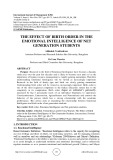
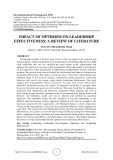
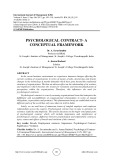
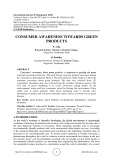
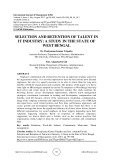

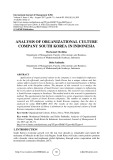
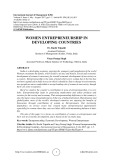


![Câu hỏi ôn tập Tâm lý học quản lý [chuẩn nhất]](https://cdn.tailieu.vn/images/document/thumbnail/2025/20251125/hathunguyen04er@gmail.com/135x160/25191764124376.jpg)
![Cẩm nang chăm sóc và nuôi dạy trẻ tăng động giảm chú ý [chuẩn nhất]](https://cdn.tailieu.vn/images/document/thumbnail/2025/20251118/kimphuong1001/135x160/4241763431998.jpg)


![Sổ tay Hướng dẫn tự chăm sóc trầm cảm [chuẩn nhất]](https://cdn.tailieu.vn/images/document/thumbnail/2025/20251029/kimphuong1001/135x160/3711761720335.jpg)
![Đề cương Tâm lý học xã hội [chuẩn nhất]](https://cdn.tailieu.vn/images/document/thumbnail/2025/20251028/c.dat0606@gmail.com/135x160/99271761707421.jpg)
![Câu hỏi ôn thi Nhập môn khoa học nhận thức [chuẩn nhất]](https://cdn.tailieu.vn/images/document/thumbnail/2025/20251021/aduc03712@gmail.com/135x160/48471761019872.jpg)

![Đề cương môn Tâm lý học sinh tiểu học [chuẩn nhất]](https://cdn.tailieu.vn/images/document/thumbnail/2025/20251007/kimphuong1001/135x160/51781759830425.jpg)



![Tâm lí học lứa tuổi và sư phạm ở tiểu học: Bài thuyết trình [chuẩn nhất]](https://cdn.tailieu.vn/images/document/thumbnail/2025/20250918/vuhoaithuong14@gmail.com/135x160/90941758161117.jpg)
